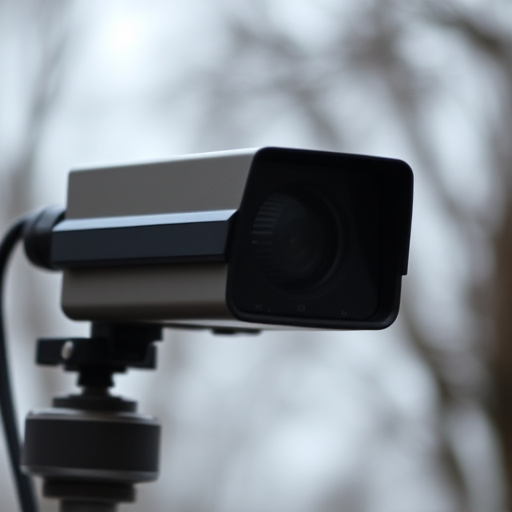Spy Camera Artificial Intelligence Integration has transformed hidden surveillance, leveraging AI algorithms for face recognition, object detection, and behavior prediction. This real-time data analysis allows automatic alerts for specific events or individuals, enhancing security measures. Techniques powered by machine learning reduce false positives, offering advanced privacy protection for residential and commercial use. Heat Maps and Motion Detection tools aid in identifying potential camera locations and patterns, while a multi-layered security approach keeps pace with evolving spy camera technologies.
Uncover the insidious world of hidden monitoring devices with our comprehensive guide. In an era where privacy is paramount, understanding how to detect spy cameras and their AI integration is vital. Explore advanced image analysis techniques, heat maps, and motion detection to stay ahead of covert surveillance. Learn preventive measures, including spotting fake devices, to fortify your spaces. Stay informed about the latest tactics in combating invasive technology and reclaiming your privacy.
- Understanding Spy Cameras and AI Integration
- Employing Advanced Image Analysis Techniques
- Utilizing Heat Maps and Motion Detection
- Preventive Measures: Spotting Fake Devices and Enhancing Security
Understanding Spy Cameras and AI Integration
Spy cameras, also known as hidden surveillance devices, have evolved significantly with the integration of Artificial Intelligence (AI). These advanced systems can now analyze and interpret visual data in real-time, making them more effective and harder to detect. AI algorithms can identify faces, recognize objects, and even predict behavior based on patterns learned from vast datasets. This enhances the functionality of spy cameras by enabling them to automatically trigger alerts for specific events or individuals, improving security measures.
The combination of spy cameras with AI offers enhanced privacy protection and security. By leveraging machine learning techniques, these devices can adapt to their surroundings and reduce false positives, ensuring only relevant activities are flagged. This integration has led to the development of more sophisticated and subtle surveillance solutions that blend seamlessly into everyday environments, making them ideal for both residential and commercial applications.
Employing Advanced Image Analysis Techniques
In today’s digital era, advanced image analysis techniques powered by artificial intelligence (AI) integration have emerged as game-changers in detecting hidden monitoring devices. AI algorithms can scrutinize visual data with unprecedented precision and speed, enhancing the ability to identify subtle anomalies that might indicate the presence of spy cameras. By employing these cutting-edge methods, users can effectively navigate a bustling landscape of potential surveillance threats.
These techniques leverage machine learning models trained on vast datasets to recognize patterns and features often associated with hidden cameras, such as unusual shapes, irregular placements, or specific optical signatures. This enables them to analyze images and video feeds in real time, alerting users to potential spies lurking within their environment. With AI’s ability to detect even the faintest whispers of a hidden signal, individuals can stay one step ahead, ensuring their privacy and safety.
Utilizing Heat Maps and Motion Detection
In the realm of hidden monitoring device signal detection, Heat Maps and Motion Detection are powerful tools enhanced by Spy Camera Artificial Intelligence Integration. Heat Maps visually represent areas of high activity or presence of signals, allowing users to pinpoint potential camera locations. By analyzing data over time, these maps can reveal patterns and unusual activities, serving as a critical component in identifying clandestine surveillance equipment.
Motion Detection, on the other hand, uses AI algorithms to detect any changes within a field of view, triggering alerts when movement is sensed. This feature is particularly useful in detecting small, discreet cameras that might be hidden in plain sight. The integration of Artificial Intelligence further refines these processes, enabling smarter and more accurate detection by learning from patterns and anomalies in the data gathered.
Preventive Measures: Spotting Fake Devices and Enhancing Security
Preventive measures are crucial in the battle against hidden monitoring devices, especially with the advancement of technology and the increasing sophistication of spy cameras. Artificial Intelligence (AI) integration plays a pivotal role here. AI-powered tools can analyze video feeds and detect unusual patterns or anomalies that might indicate the presence of a hidden device. By learning typical behavior and environments, these systems can identify suspicious activities like a camera being turned on in an unlikely location or an irregular object appearing in a stream.
To further enhance security, individuals and organizations should adopt a multi-layered approach. Regularly updating software and firmware to patch known vulnerabilities is essential. Employing motion sensors and access control systems can deter would-be installers. Additionally, conducting periodic physical inspections and using specialized equipment to scan for signals can help uncover fake or hidden devices. Staying informed about the latest spy camera technologies and tactics ensures that one remains a step ahead in this ongoing security game.
In the ever-evolving landscape of security, staying ahead of hidden monitoring devices requires a multi-faceted approach. By combining insights from spy camera artificial intelligence integration with advanced image analysis and heat map technologies, individuals and organizations can enhance their vigilance. Understanding preventive measures, such as identifying fake devices and implementing robust security protocols, is crucial to maintaining a safe environment. These strategies, when employed together, offer a comprehensive solution for detecting and mitigating the potential risks posed by hidden monitoring devices.
